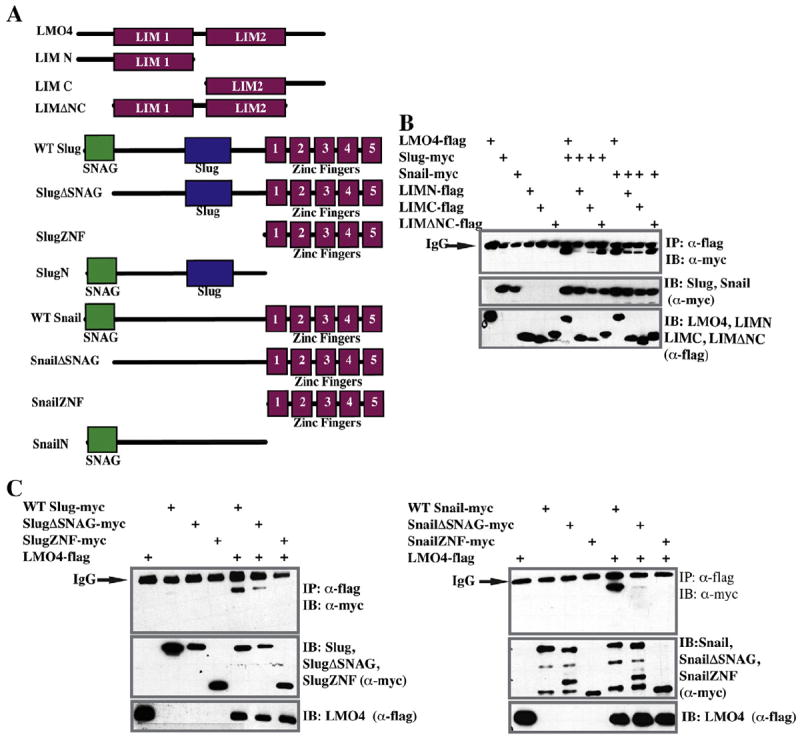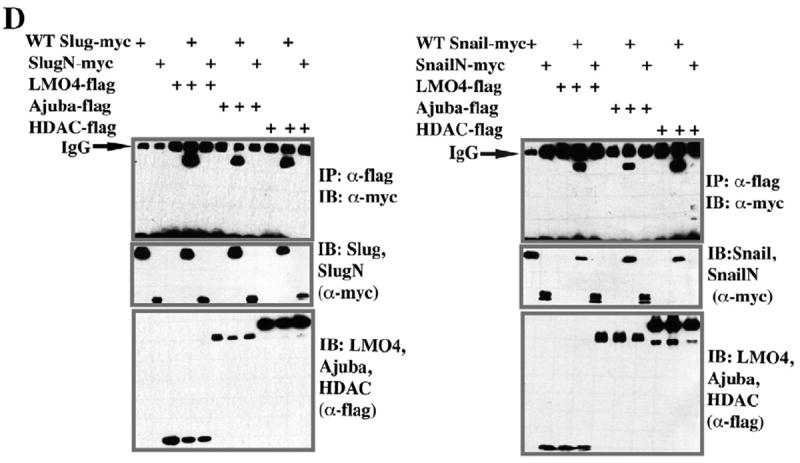Fig. 5.


The LIM domains of LMO4 and the N-terminus of Slug are necessary for interaction. (A) Schematic of showing deletion mutants of LMO4, Slug, or Snail used in this study. (B) Co-immunoprecipitation (IP) assay probing the LMO4 domains required for interaction with Slug and Snail. Embryos were injected with mRNA encoding flag-tagged LMO4 constructs and myc-tagged Slug or Snail. α-flag IP followed by α-myc western shows that both LIM domains are required for robust interaction with Slug and Snail. (C) Co-immunoprecipitation assay using flag-tagged LMO4 and myc-tagged forms of either Slug (left panel) or Snail (right panel). Deletion of the Snag domain has a greater effect on the ability of Snail to interact with LMO4. (D) Co-immunoprecipitation assays comparing the ability of the full length or N-terminus of Slug (left panel) or Snail (right panel) to interact with LMO4, HDAC or Ajuba. Both Slug and Snail interact comparably with all three co-regulatory factors, but the Snag domain containing N-terminus is not sufficient for this interaction. Lower molecular weight bands on Snail immunoblot are common Snail degradation products.
